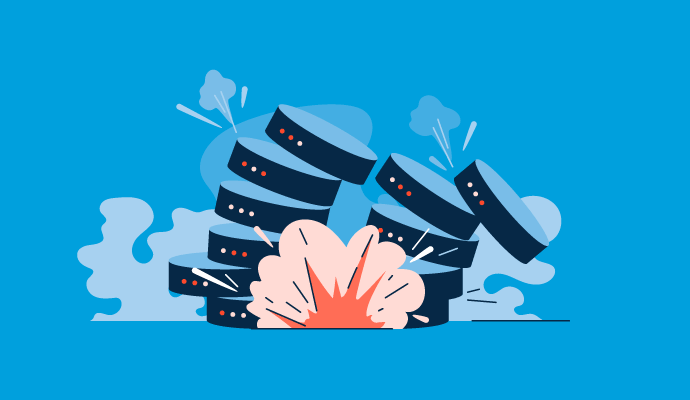Discovering the Relevance of Information Devastation in the Context of Computer System Safety Solutions and Protecting Confidential Data
In an era where data violations are progressively common, the significance of reliable information damage can not be overstated. When no longer necessary, Organizations has to embrace strict measures to make certain that delicate info is not only shielded during its lifecycle but additionally emphatically eradicated. The approaches used for data eradication, paired with compliance to legal criteria, play a critical role in keeping privacy and trust. The implications of these techniques expand past plain compliance, affecting a firm's reputation and operational honesty in the digital market. What approaches can organizations apply to enhance their information devastation protocols?
Understanding Data Damage
Information devastation is a vital part of computer system safety that entails the permanent elimination of data from storage gadgets to protect against unauthorized access and prospective data violations. In a significantly electronic landscape, companies deal with increased dangers associated with sensitive information being incorrectly accessed or made use of. Efficient information damage safeguards versus these dangers, making certain that personal dataâEUR" such as customer info, intellectual home, and economic recordsâEUR" can not be recovered after disposal.
Recognizing the relevance of information destruction prolongs beyond simple compliance with regulative and lawful frameworks; it is essential for keeping business integrity and trust fund. When data is improperly taken care of or inadequately damaged, the repercussions can be extreme, consisting of monetary loss, reputational damage, and lawful liabilities.

Methods of Data Obliteration

One widespread approach is information cleaning, which entails overwriting existing information with arbitrary patterns numerous times. This strategy provides the initial information irretrievable, making it a preferred selection for companies looking for to shield secret information.
Another approach is degaussing, which makes use of an effective electromagnetic field to interfere with the magnetic domain names on storage space gadgets, efficiently removing the data. This approach is particularly reliable for magnetic media yet is not relevant to solid-state drives.
Physical devastation is one more robust technique, crushing or involving the shredding of storage space tools. This technique warranties that information healing is essentially impossible, making it perfect for highly delicate info.
Lastly, security can work as a complementary approach to information elimination. By encrypting information prior to removal, companies can add an added layer of safety, guaranteeing that also if remnants are recovered, they stay inaccessible without the decryption trick. Each technique should be picked based on the degree of data level of sensitivity and the particular security demands of the organization.
Legal Compliance and Information Safety
Organizations must browse a complex landscape of lawful needs associated with data protection, particularly after applying techniques of information eradication. Different regulations, such as the General Data Security Guideline (GDPR) and the Health Insurance Coverage Transportability and Responsibility Act (HIPAA), enforce stringent guidelines on exactly how companies should manage and get rid of of delicate data. Failure to conform with these regulations can result in substantial lawful repercussions, including significant fines and reputational damage.
Information devastation procedures must be thoroughly recorded to demonstrate compliance with suitable regulations and standards. This paperwork not just offers as proof of adherence to legal commitments but likewise shows a dedication to guarding delicate information. Organizations ought to likewise develop clear plans regarding information retention and destruction timelines, making sure that information is not held longer than essential.

Additionally, routine audits and evaluations of data damage techniques are necessary to preserve compliance and adapt to developing lawful structures (data destruction). By proactively resolving legal demands, companies can alleviate risks related to information breaches and show their commitment to information safety and security. Ultimately, prioritizing lawful compliance in data devastation procedures is not just a governing commitment, but a fundamental facet of a robust information safety technique
Effect On Service Credibility
The reputation of an organization can be substantially impacted by its strategy to data devastation and administration. In today's digital landscape, where information breaches can happen at browse around this site any minute, the helpful resources failure to effectively throw away sensitive details can bring about extreme consequences. Organizations that inadequately handle information damage threat subjecting personal customer details, which not only breaches personal privacy laws however additionally erodes depend on amongst stakeholders and clients.
A ruined reputation can lead to lowered customer loyalty, as clients end up being reluctant to engage with a company that has actually shown neglect in shielding their information. Unfavorable promotion bordering an information breach can have a long lasting result, as potential customers may be deterred by the viewed absence of protection. This can cause a direct decrease in revenue and market share.
Moreover, companies that prioritize data destruction as component of their security approach can boost their credibility by showcasing their commitment to safeguarding sensitive details. By taking on rigid information administration methods, organizations can not only reduce risks but also place themselves as credible entities in their particular industries, therefore reinforcing their overall brand picture.

Best Practices for Secure Disposal
Implementing finest practices for safe and secure disposal of data is important for minimizing dangers associated with information breaches and ensuring conformity with privacy policies. Organizations ought to embrace a comprehensive information disposal plan that outlines treatments for both digital and physical information devastation.
For physical data storage devices, such as hard disk drives, shredding or degaussing is advised to avoid information healing. In addition, organizations ought to keep a chain of guardianship documents throughout the disposal procedure, making sure responsibility and traceability wikipedia reference of disposed things.
For electronic information, making use of software program that sticks to sector criteria for information cleaning is important. This software application ought to overwrite existing information several times, making recuperation essentially impossible. It is also crucial to confirm the efficiency of the data damage process with audits or third-party analyses.
Educating employees on protected disposal methods includes an additional layer of security, as human error can commonly bring about information exposure. Frequently upgrading and reviewing disposal policies guarantees positioning with progressing guidelines and technological advancements. By executing these finest methods, organizations can substantially minimize the danger of unauthorized data access and enhance their overall data protection strategy.
Conclusion
In conclusion, data damage is a fundamental element of computer system protection solutions that makes sure the protection of personal details from unauthorized accessibility. Implementing effective methods of data removal, sticking to legal compliance, and acknowledging the influence on organization credibility are necessary parts of a comprehensive information security technique. By adopting finest practices for secure disposal, organizations can cultivate trust fund with clients and safeguard delicate data, ultimately adding to a much more secure electronic landscape.
In an era where information breaches are significantly typical, the significance of reliable data devastation can not be overstated.Information destruction is a critical part of computer system safety that includes the permanent removal of data from storage tools to avoid unapproved access and possible data breaches. Organizations needs to also develop clear policies concerning information retention and destruction timelines, making sure that information is not held longer than required.
By proactively resolving legal demands, companies can mitigate dangers linked with information breaches and demonstrate their dedication to data security (data destruction). Inevitably, prioritizing legal conformity in information devastation procedures is not just a governing obligation, yet an essential aspect of a robust data protection method